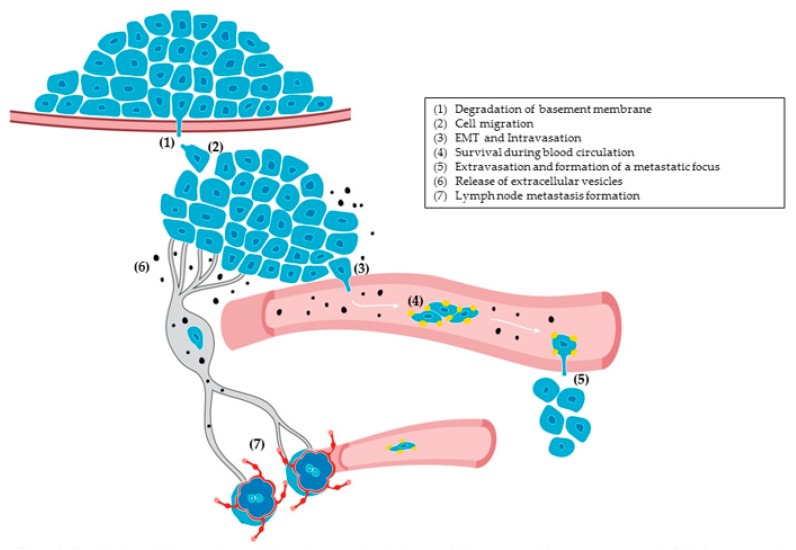Figure 3.
Simplified model showing the probable implication of podoplanin in different steps of the metastatic cascade. Cells from a premalignant tumor traverse the basement membrane using the proteolytic activity of invadopodia (1) and invade the connective issue (2) to form a malignant tumor. Tumor cells can undergo epithelial–mesenchymal transition (EMT) and enter into the blood stream by degrading the basement membrane of the blood vessel through invadopodia (3). Malignant cells resist against shear stress and inhibit immune cell assaults by activating and aggregating platelets (4). Platelet aggregation favours tumor-cell adhesion and emboli formation in the microvasculature; adhered tumor cells use invadopodia to extravasate from the blood vessel (5). Malignant cells secrete soluble factors and extracellular vesicles (6) that promote angiogenesis and lymphangiogenesis, and infiltrate pre-existing lymphatic vessels to reach the lymph nodes and form metastasis (7).

